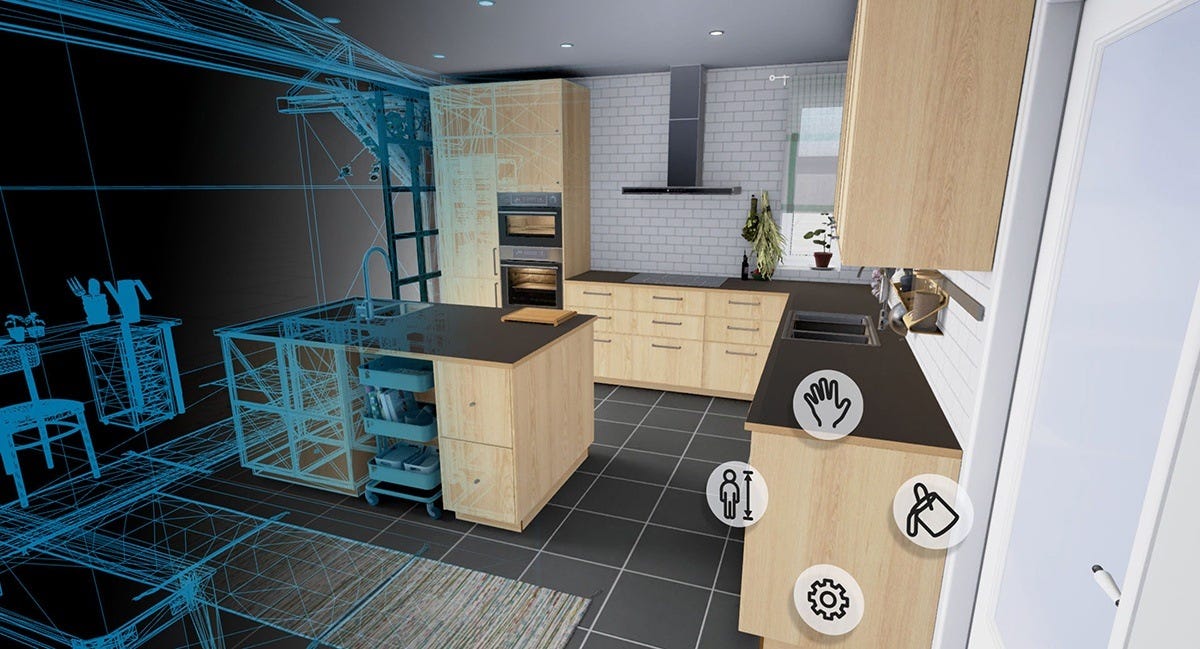Signals Brief: Home Dialysis Bill & FDA AR/VR Home Care Hub
What you need to know about H.R. 8075 & FDA's latest health equity initiative
Friends and fellow explorers,
In this news brief, we have two big headlines to put on your radars this week— both relate to delivering more accessible, equitable care in the home setting. As someone who spends his days writing and building at the intersection of these two signals, I’m hopeful for what’s to come. With any luck, and a healthy dose of legislative and grassroots support, these efforts will usher in new realities for tens of millions of patients, care partners, and communities. In due time.
First, we’ll learn about a home dialysis bill that would provide funding for staff assistance, plus more training options for home dialysis.
Second, we’ll take a quick look at the FDA’s latest home initiative, designed to help reimagine the home environment as an integral part of the healthcare system.
Have tips or feedback? Hit reply or join the conversation here.
Reading time: 5 minutes
Home Dialysis Bill
The Improving Access to Home Dialysis Act (HR-8075) was introduced on April 18 in the U.S. House of Representatives by Reps. Carol Miller (R-WV), Marilyn Strickland (D-WA), Earl Blumenauer (D-OR), and Mariannette Miller-Meeks (R-IA). This bill aims to increase access to home dialysis by providing trained, professional staff assistance to patients in the home and ensuring that all patients are given the education and support they need to utilize this modality if they so choose. More than 800,000 adults in the United States have irreversible kidney failure and require either a transplant or multiple dialysis treatments per week to survive. The average in-center dialysis treatment takes 3-4 hours to complete, not including travel to and from the center.
Many patients are not informed when they first begin dialysis that there are more options beyond the traditional in-center, in-a-chair, 3 times a week system. Only 14% of patients on dialysis in the US are using at-home options, despite evidence showing that it may be a better option for some patients.1
If passed, here’s what the law will do:
Mandate that patients get proper education on all of their dialysis options, including making sure that even patients who crash onto dialysis with no preparation can get education on other options once they have stabilized and can make informed decisions about their future.
Expand the universe of healthcare providers who can provide home dialysis training to remove the burden from the nursing staff and cut down on wait times to get trained. It would also allow for the use of group training, telehealth, and off-site training when appropriate.
Cover the costs of in-home healthcare support staff for patients when they are beginning their home dialysis journey. This in-home assistance would help patients transition from the facility and support the patient and if available, their care partner, with the goal that they become fully independent over time. Some patients with certain disabilities or other concerns could be eligible for continuing in-home assistance.2
“Home dialysis is a wonderful tool that allows patients to be at the center of their own care, and Congress should be working to ensure patients that choose this modality receive the training necessary to dialyze safely in their home.”
Home as a Health Care Hub
This week the FDA announced the launch of a new initiative, Home as a Health Care Hub, to help reimagine the home environment as an integral part of the health care system, with the goal of advancing health equity for all people in the U.S.
But here’s the part you may not have on your home health bingo card. The hub will be designed as an Augmented Reality/Virtual Reality (AR/VR)-enabled home prototype, with the $1.2 million project expected to be completed later this year.
The agency says the hub will help medical device developers, policymakers and providers develop and understand at-home medical technologies. The first models will be focused on rural and low-income populations.
“While many care options are currently attempting to use the home as a virtual clinical site, very few have considered the structural and critical elements of the home that will be required to absorb this transference of care.”
Why it matters: FDA has been considering how to ensure the safety of these devices since 2010, when the agency released a white paper on the topic. The Home as a Health Care Hub prototype is the beginning of the conversation—helping device developers consider novel design approaches, aiding providers to consider opportunities to educate patients and extend care options, generating discussions on value-based care paradigms, and opening opportunities to bring clinical trials and other evidence generation processes to underrepresented communities through the home.
Ultimately, lessons from this initiative could inform future regulation in the space and technology used in hospital-at-home programs.3
Discussion
What’s your take on these headlines and home care trends? How do you think the home dialysis bill would impact patient outcomes, home adoption, or staffing models?
Leave a comment below or join the kidney chat and let us know what’s on your mind.
Want to support my work?
Thanks for tuning in. If you enjoy these doses of optimism and news from the Kidneyverse, consider becoming a free or paid subscriber to support my work!

![Signals From [Space]](https://substackcdn.com/image/fetch/e_trim:10:white/e_trim:10:transparent/h_72,c_limit,f_auto,q_auto:good,fl_progressive:steep/https%3A%2F%2Fsubstack-post-media.s3.amazonaws.com%2Fpublic%2Fimages%2F4d588ac1-7fac-4bd4-829d-fc7b4e8f1326_1512x288.png)

![Signals From [Space]](https://substackcdn.com/image/fetch/w_36,h_36,c_fill,f_auto,q_auto:good,fl_progressive:steep,g_auto/https%3A%2F%2Fsubstack-post-media.s3.amazonaws.com%2Fpublic%2Fimages%2F55686857-6b99-45a6-ac0f-09c9f023f2a0_500x500.png)



